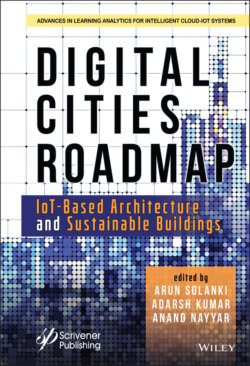Читать книгу Digital Cities Roadmap - Группа авторов - Страница 41
1.10.2 Intelligent Tools, Cameras and Electronic Controls in a Connected House (SRB)
ОглавлениеCompared with commercial buildings, intelligent systems are simpler to incorporate in residential buildings because residential buildings have fewer technological infrastructure and less strict quality specifications. Because industrial buildings typically receive more public tourists, design projects are generally more complex than development models for private buildings [25].
Figure 1.19 Smart building appliances [52].
For apartment buildings typically have the bulk of the time with a small number of inhabitants. Rather than residential houses, the expenses involved with the procurement and development of intelligent equipment and services with industrial buildings are higher. Figure 1.20 shows an embedded socialized housing framework using an intelligent sensor network. Sensors include energy supply, estimation, HVAC, illumination and protection control systems. A building automation network operates a range of interconnected tools, sensors and actuators that together offer facilities for the well-being of citizens. Of starters, washers and drives, refrigerators, thermostats, lighting systems, power outlets, energy meters, smoke alarms, TVs, game consoles, window/door controls and alarms, air conditioning systems, video cameras and sound-detectors [36, 38, 39], are examples of these electronic appliances, sensors and actuators. These include advanced electronic systems like sophisticated floors and smart furnishings are continuously being built [40, 42].
Figure 1.20 Smart Residential Building Connected Sensors and Actuators.
